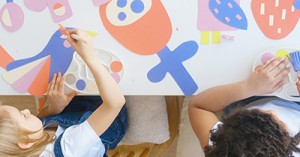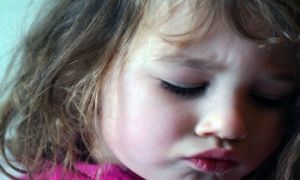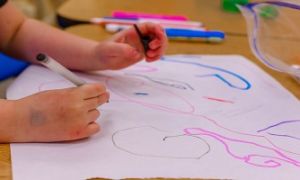A: Intentional teaching means teaching with a clear purpose. It’s about making thoughtful decisions to help children learn in meaningful ways. At its core, intentional teaching means teaching with a clear purpose. It’s the art of knowing when to step in, when to step back, and how to co-construct learning that is meaningful, inclusive, and connected to each child’s world.
What Does Intentional Teaching Look Like?
Educators use intentional teaching when they:
- Plan ahead with specific learning goals in mind, aligned with curriculum outcomes and child interests.
- Notice and respond to learning moments as they happen—those spontaneous sparks of curiosity or challenge.
- Decide when to guide learning and when to observe, allowing children’s agency to lead the way.
- Adapt strategies to suit diverse learners, using modelling, questioning, and sustained shared thinking.
Intentional teaching is grounded in:
- Understanding how children grow, learn, and express themselves.
- Knowing what the curriculum (like the EYLF V2.0) expects and how to translate it into practice.
- Being clear on what each child needs, values, and is curious about.
- Reflecting on what’s working—individually, as a team, and in partnership with families.
It’s not about controlling play; it’s about supporting learning through play. When educators document and share their intentions, the learning becomes stronger, more visible, and deeply connected to what families and communities value.
EYLF V2.0 Language for Intentional Teaching
The updated Early Years Learning Framework (EYLF V2.0) places intentionality at the centre of quality practice:
- “Educators are deliberate, purposeful, and thoughtful in their decisions and actions.” (Element 1.2.1, NQS)
- “Intentional teaching involves educators being purposeful in extending children’s learning through planned and spontaneous experiences.”
- “Educators use a repertoire of strategies—such as modelling, questioning, demonstrating, and sustained shared thinking—to support learning.”
- “Intentionality includes recognising and responding to children’s agency, interests, and funds of knowledge.”
- “Play-based learning and intentionality” is now a combined practice, highlighting the educator’s role in co-constructing learning through play.
- “Critical reflection and reflexivity” are essential to ensure teaching intentions are responsive, inclusive, and aligned with learning outcomes.
Real-Life Examples of Intentional Teaching
Here’s how intentional teaching shows up in everyday practice:
-
Art Area: An educator notices a child repeatedly drawing spirals. Instead of redirecting, she introduces books on patterns, offers clay for sculpting spirals, and documents the child’s emerging interest in design.
-
Outdoor Play: A group of children explore puddles after rain. The educator joins them with measuring cups and asks, “What happens when we add sand?” —sparking inquiry and scientific thinking.
-
Story Time: A child brings a book from home about migration. The educator plans a week of learning around journeys, maps, and storytelling, linking the child’s cultural knowledge to the curriculum.
-
Transitions: During a busy pack-up time, an educator notices rising tension. She pauses, invites children to take three deep breaths, and uses a visual timer—intentionally supporting emotional regulation.
Embedding Intentional Teaching in Your Team
To strengthen intentionality across your setting:
- Use planning templates that link goals, strategies, and child voice.
- Document spontaneous moments with photos and reflective notes.
- Share intentions during team meetings and critical reflection sessions.
- Invite families to share their child’s interests, strengths, and cultural knowledge.
- Align your goals with EYLF outcomes and NQS elements for clarity and impact.
Intentional teaching is the difference between reacting and responding, between activity and learning, and between supervision and co-construction. When educators teach with intention, children learn with meaning. And when teams reflect together, the purpose becomes collective, the practice becomes powerful, and the outcomes become transformational.
Further Reading
Intentional Teaching Strategies For Educators
Intentional Teaching In Early Childhood Settings
Intentional Teaching Examples In QKLG







 Here is the list of the EYLF Learning Outcomes that you can use as a guide or reference for your documentation and planning. The EYLF
Here is the list of the EYLF Learning Outcomes that you can use as a guide or reference for your documentation and planning. The EYLF The EYLF is a guide which consists of Principles, Practices and 5 main Learning Outcomes along with each of their sub outcomes, based on identity,
The EYLF is a guide which consists of Principles, Practices and 5 main Learning Outcomes along with each of their sub outcomes, based on identity, This is a guide on How to Write a Learning Story. It provides information on What Is A Learning Story, Writing A Learning Story, Sample
This is a guide on How to Write a Learning Story. It provides information on What Is A Learning Story, Writing A Learning Story, Sample One of the most important types of documentation methods that educators needs to be familiar with are “observations”. Observations are crucial for all early childhood
One of the most important types of documentation methods that educators needs to be familiar with are “observations”. Observations are crucial for all early childhood To support children achieve learning outcomes from the EYLF Framework, the following list gives educators examples of how to promote children's learning in each individual
To support children achieve learning outcomes from the EYLF Framework, the following list gives educators examples of how to promote children's learning in each individual Reflective practice is learning from everyday situations and issues and concerns that arise which form part of our daily routine while working in an early
Reflective practice is learning from everyday situations and issues and concerns that arise which form part of our daily routine while working in an early Within Australia, Programming and Planning is reflected and supported by the Early Years Learning Framework. Educators within early childhood settings, use the EYLF to guide
Within Australia, Programming and Planning is reflected and supported by the Early Years Learning Framework. Educators within early childhood settings, use the EYLF to guide When observing children, it's important that we use a range of different observation methods from running records, learning stories to photographs and work samples. Using
When observing children, it's important that we use a range of different observation methods from running records, learning stories to photographs and work samples. Using This is a guide for educators on what to observe under each sub learning outcome from the EYLF Framework, when a child is engaged in
This is a guide for educators on what to observe under each sub learning outcome from the EYLF Framework, when a child is engaged in The Early Years Learning Framework describes the curriculum as “all the interactions, experiences, activities, routines and events, planned and unplanned, that occur in an environment
The Early Years Learning Framework describes the curriculum as “all the interactions, experiences, activities, routines and events, planned and unplanned, that occur in an environment


